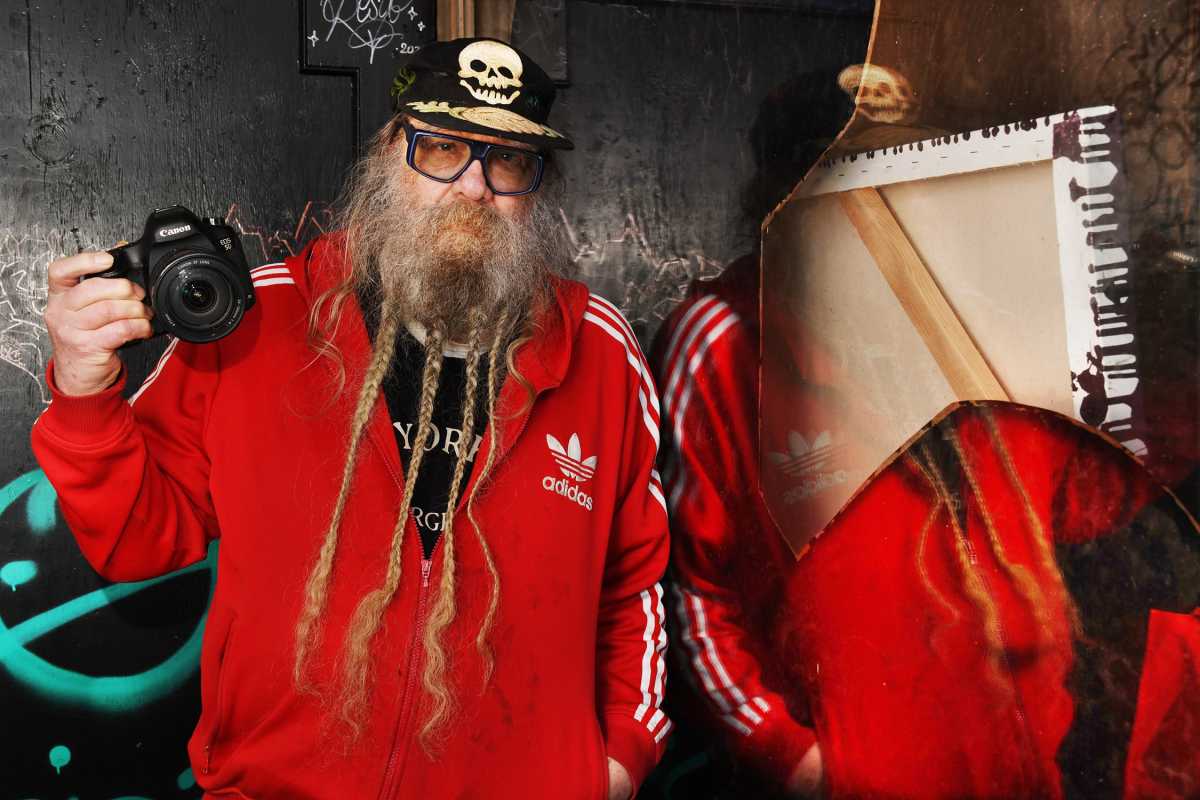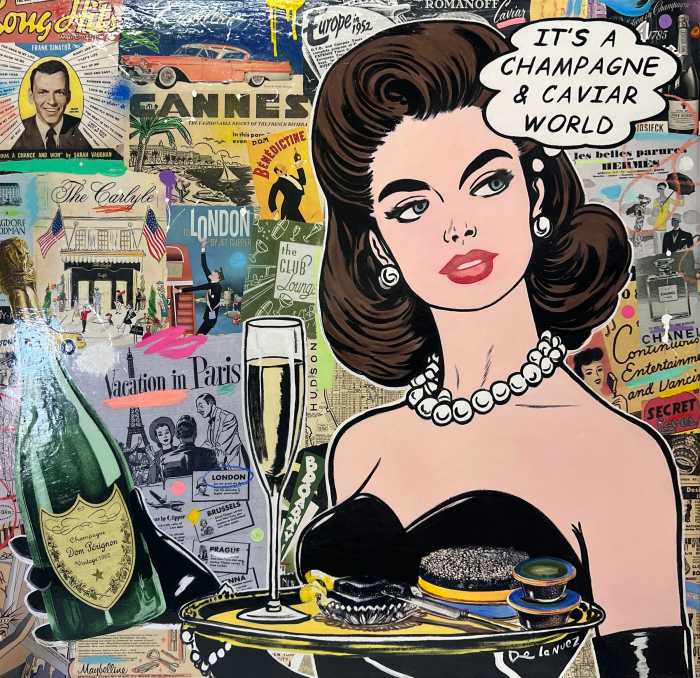Clayton Patterson is looking for an angel. He doesn’t figure on becoming one himself, but that’s not the point. He needs some help down here before he heads up there — or, he says, “wherever.”
“I’m playing the endgame”, he bluntly declares. “I’m 75, I just had pneumonia, I had cancer … and all of this needs to be preserved.”
“All of this” is an invaluable historical archive of the East Village and the Lower East Side which consists of, among other things, about 3,000 hours of video and more than 200,000 photos shot on film and who knows how many digital images over the last 40 years, as well as a collection of his own art and that of many others.
Patterson has been fearlessly documenting the area for decades, capturing the diverse universe that surrounded him — drag queens, skinheads, graffiti artists, gang members, neighborhood kids, outsider artists, Santeria priests, Orthodox Jews. And that’s just for starters.
The man who the late Anthony Bourdain called “the godfather of Lower East Side documentary” wants to turn his two-story home/gallery/studio/meeting place into a foundation that will live on after he’s gone, giving people a research center for what is essentially a lost world.
Though it’s still a vibrant community with its own character, much of its daily history would be lost if Patterson wasn’t dedicated to preserving it.
“I want it to be a gift to New York,” he says. “We’re looking to the broader society to try to find some people who are interested in the kind of obscurity, the kind of outsiders and people that I’ve been interested in. The remnants of the Lower East Side is almost like another lost tribe.”
“It’s really important to save these archives,” he stresses. “It’s a history of the forgotten ones, people who were out of the mainstream.”
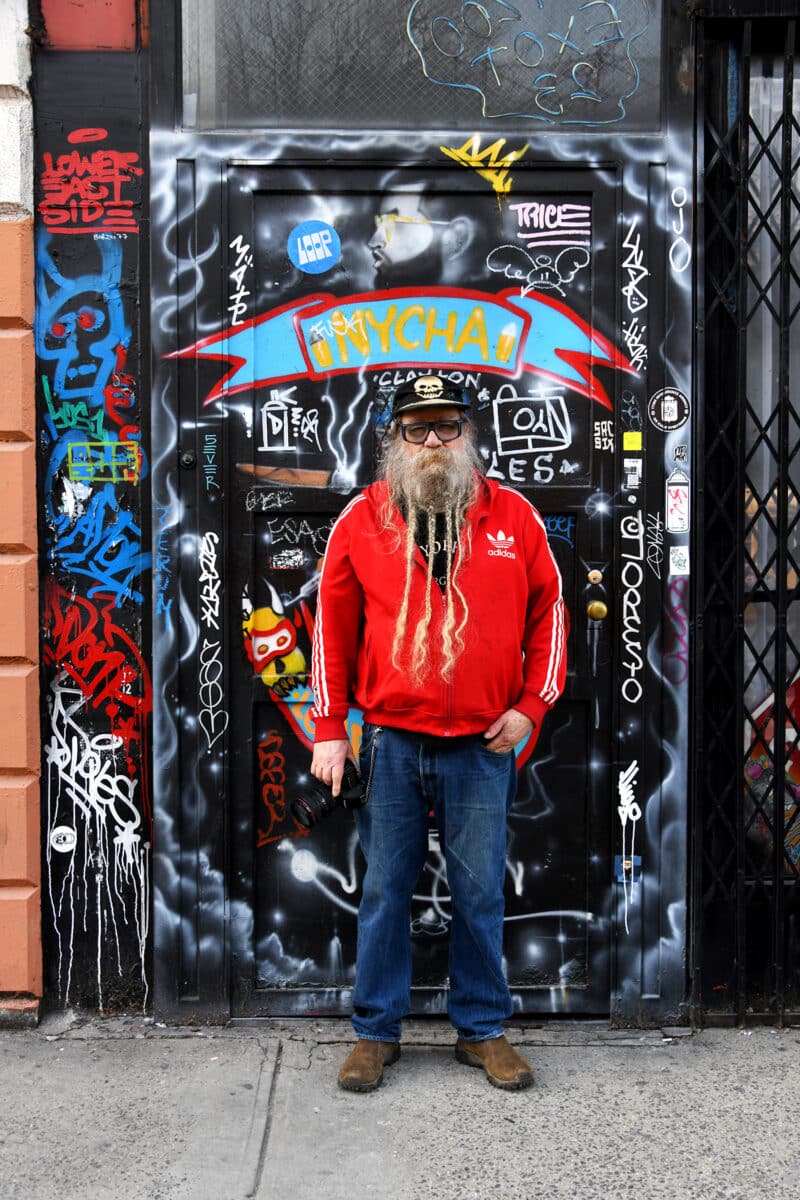
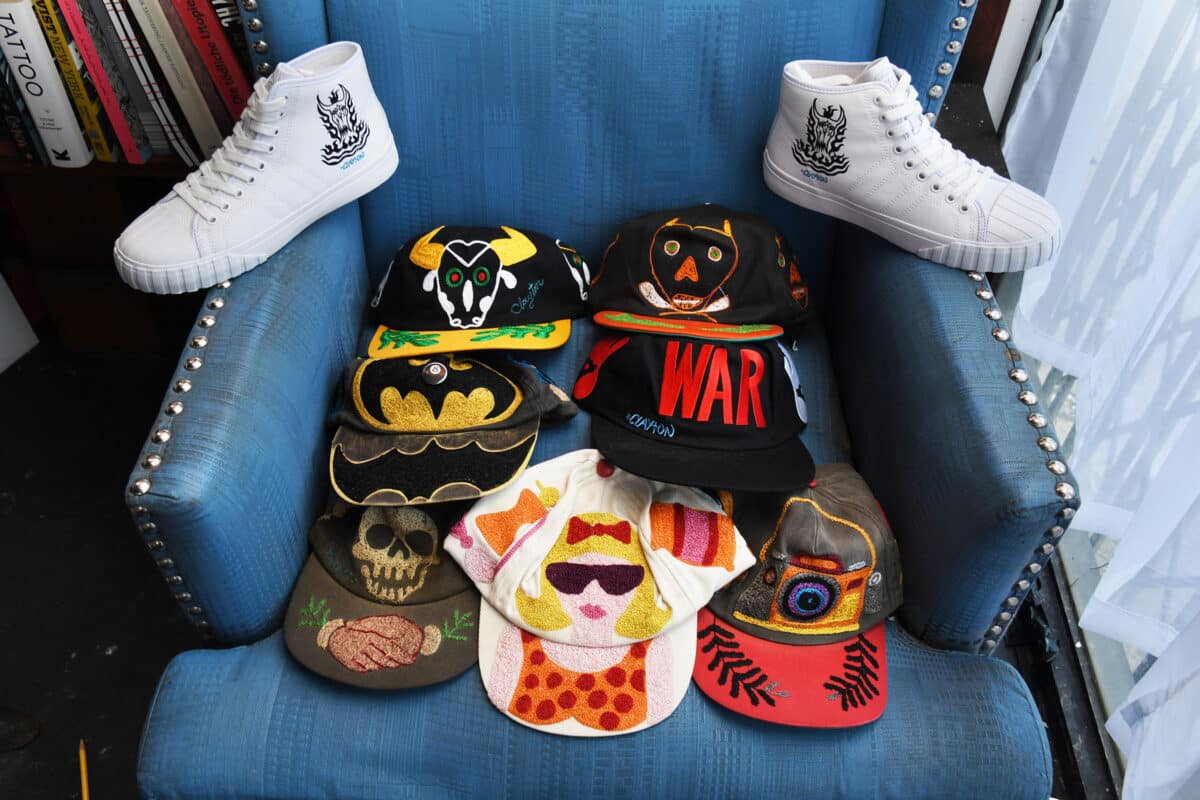
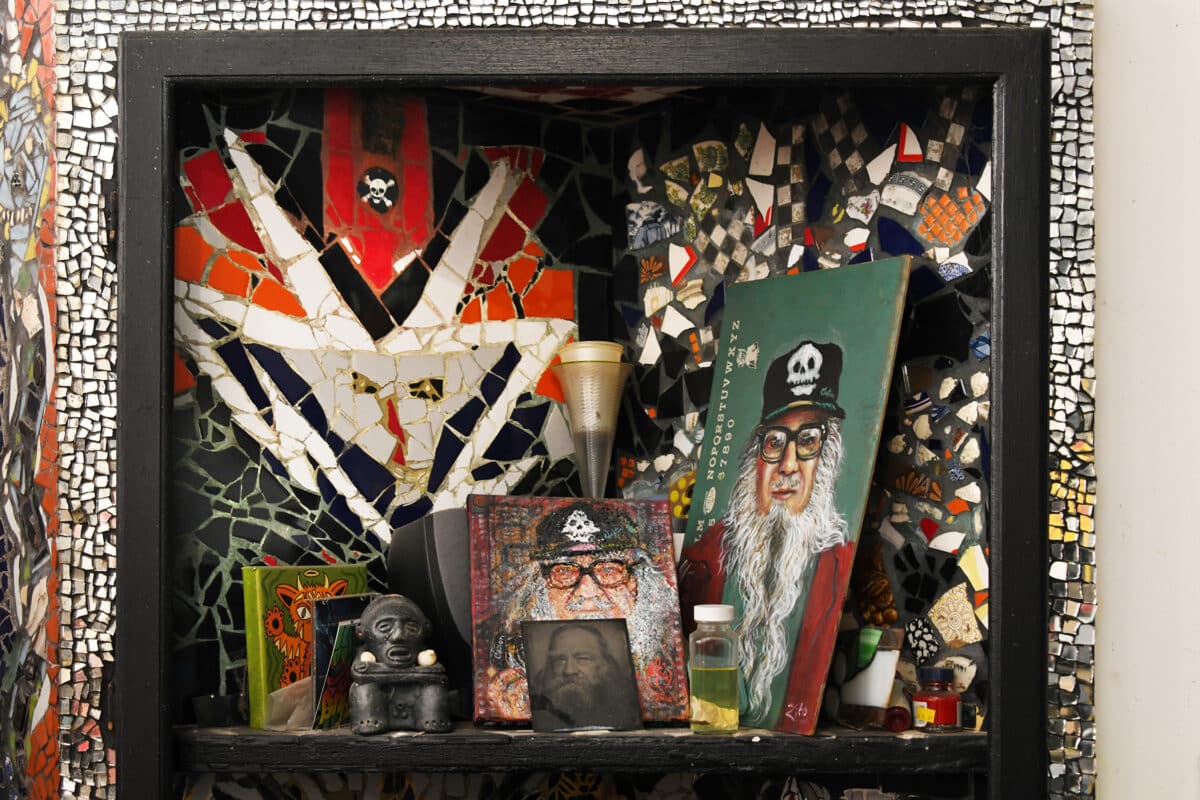
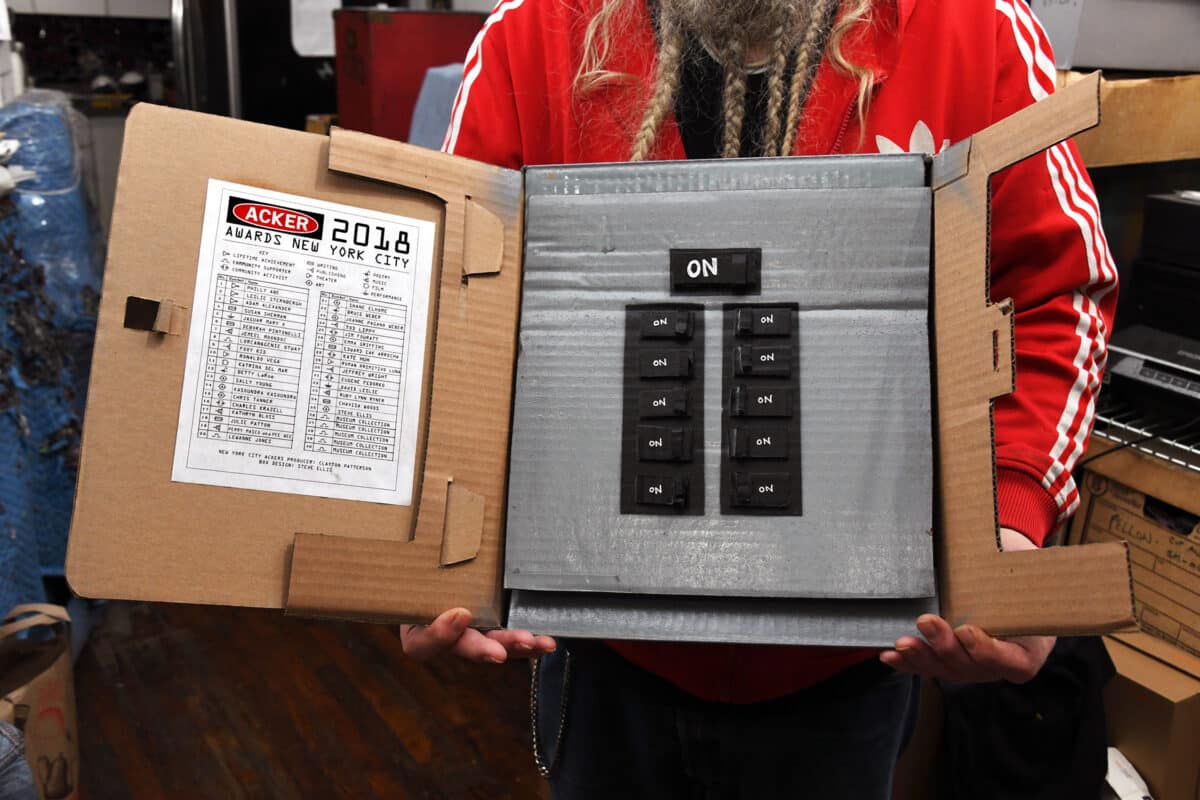
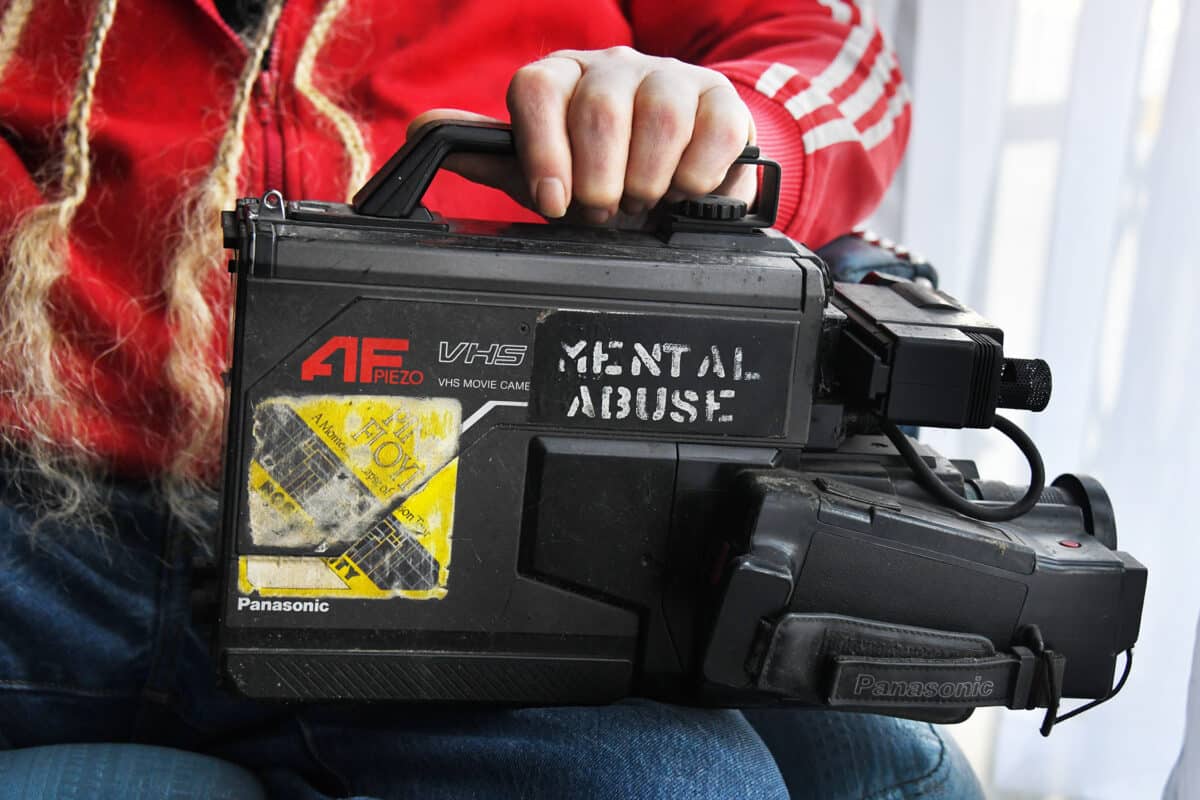
Patterson had a fling with the art world in the 1980s, but, he says, “we dropped out and never looked back.” Not interested in playing that game — although he is a very talented artist — Patterson set about capturing his neighborhood, photographing the mundane things we took for granted and the people that walked past his door.
That door became the backdrop for a photography series that was presented by Photoville last year entitled, “Clayton Patterson’s Front Door: Residents and Writers.”
His documentation has emerged in numerous articles for The Villager over the years, as well as a number of books with subjects ranging from the history of tattoos in NYC to Jewish life in the Lower East Side. Not only does he recount the times when tattooing was illegal in NYC (from 1961 to 1997) but he was instrumental in making it legal once again.
And although he’s not Jewish, he managed to serve on the board of the ultra-Orthodox 8th Street Synagogue and help keep it running for many years.
Much of Patterson’s story is told in a graphic novel created by Julian Voloj. Using a combo of photos and the contributions of various illustrators such as Miles Anderson, Nancy Calef, Roberto Castro, Maegan Dolan, Ray Felix, Sasha Kimiatek, Jesse Lambert, Summer McClinton, Ben Moody, Natania Nunubiznez and others, Voloj presents a lively narrative that includes the tale of Patterson’s video taping the Tompkins Square Riots in 1988, which became vital evidence for the case against police brutality.
“I’m very proud of the book”, says Voloj. “Like Clayton, I am interested in the people not known.”
Part of a team that includes Teddy Liouliakis and Griffin Rue, Volaj is dedicated to helping Patterson conserve his work and the archive.
“This place is a community center,” he says. “We want to preserve that.”
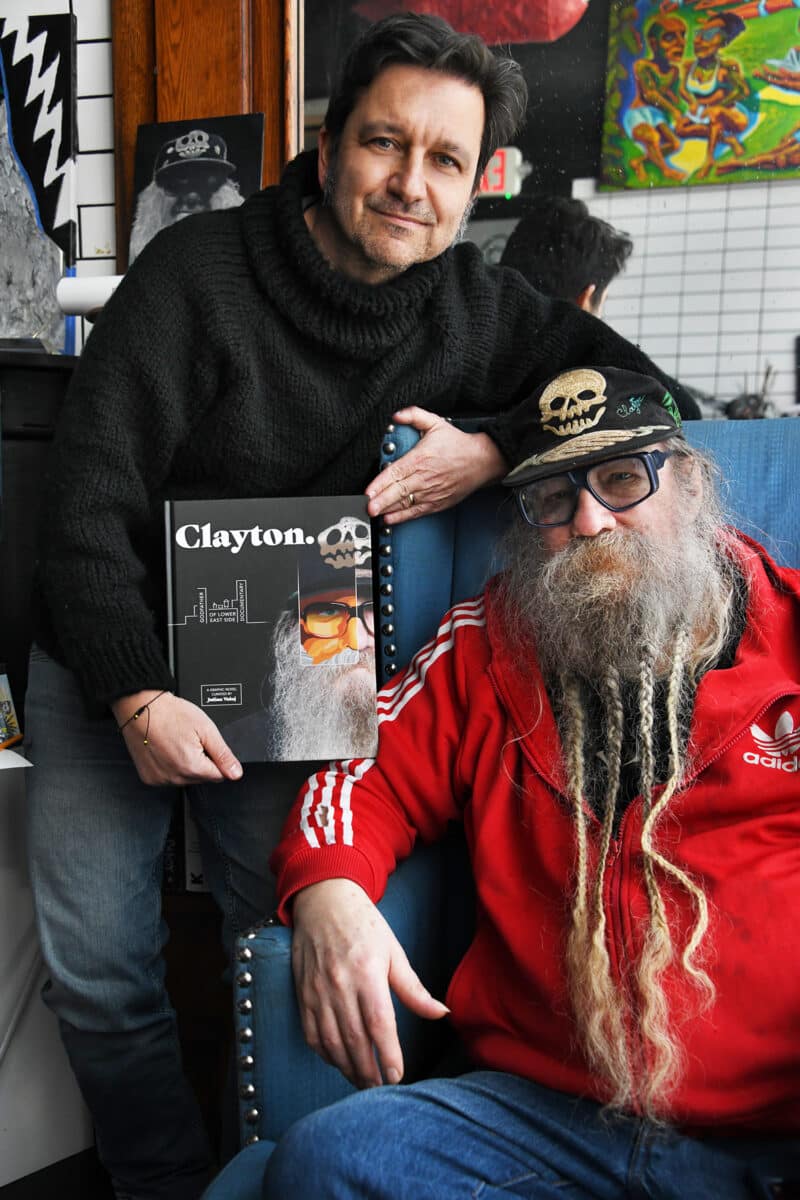
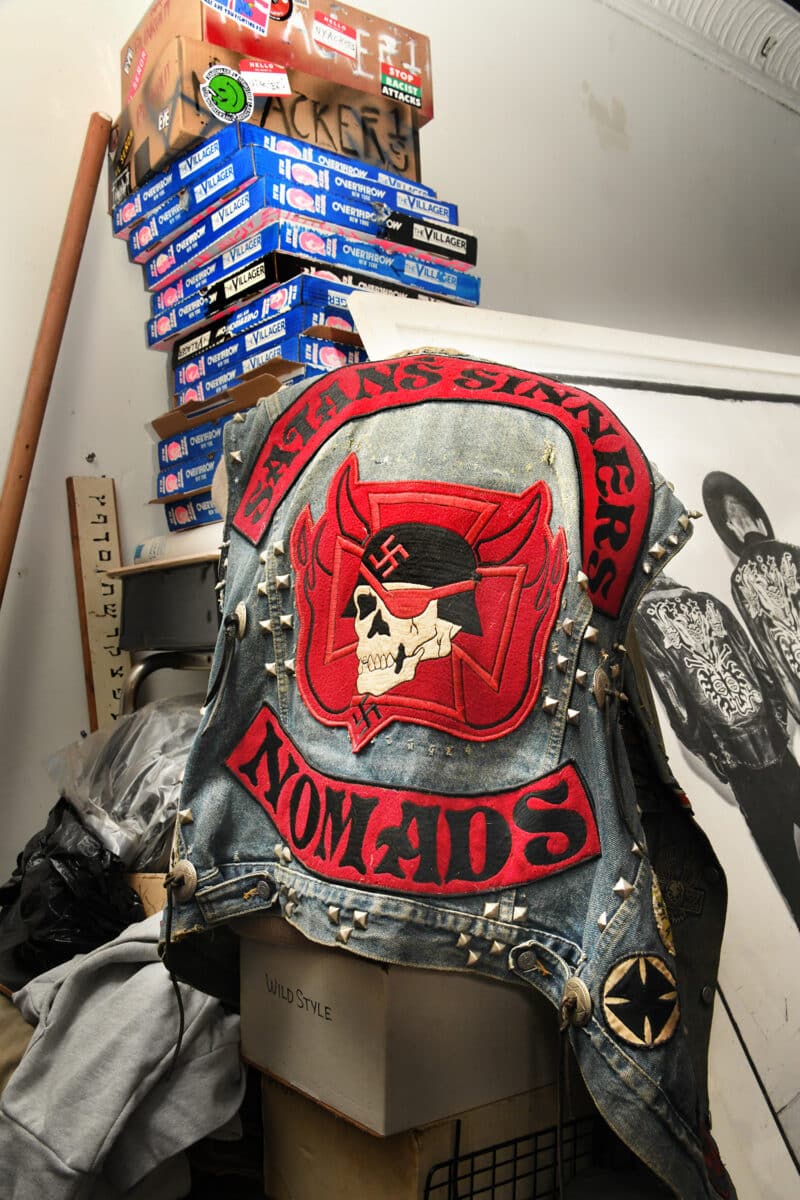
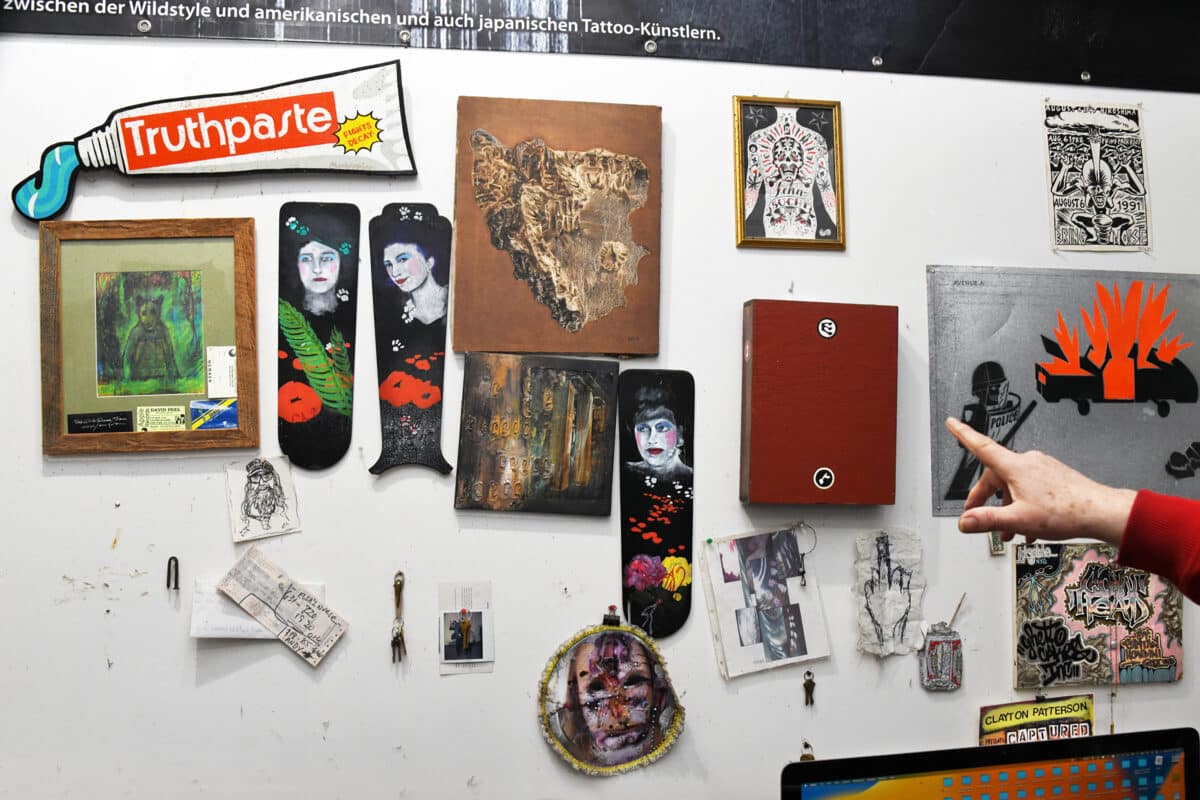
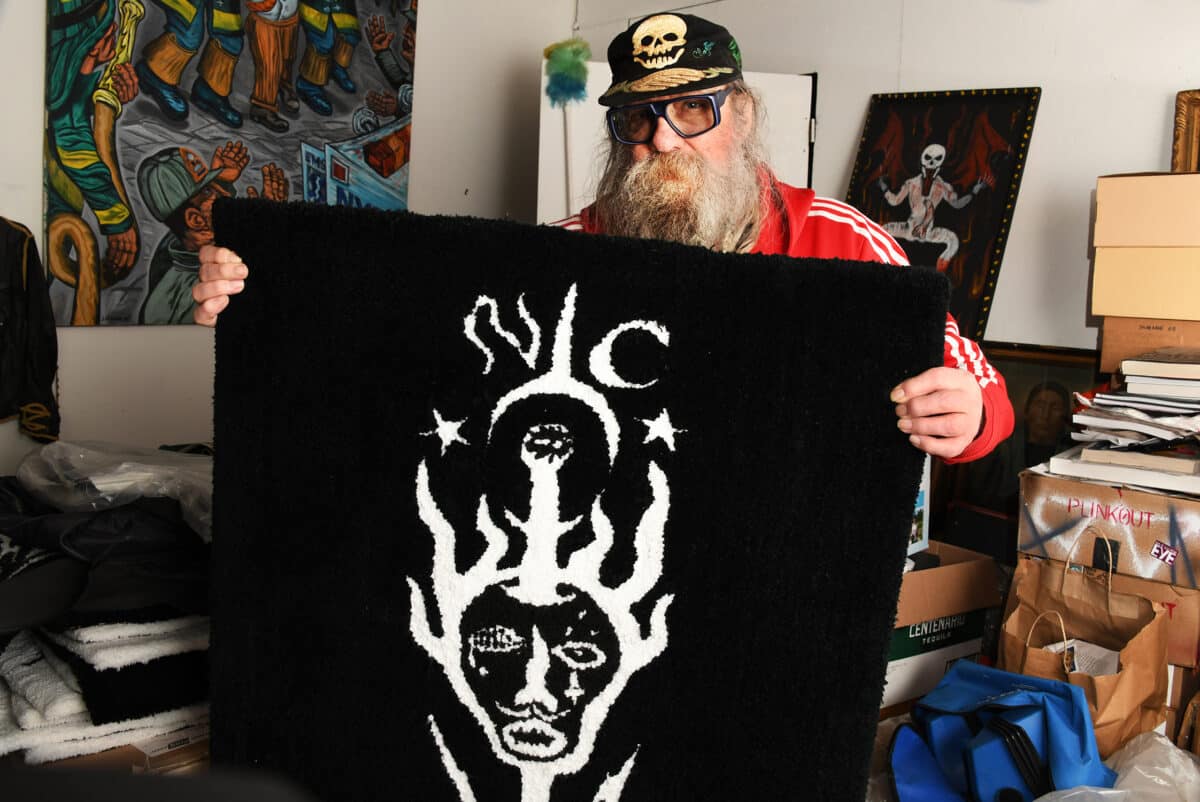
Volaj had connected Patterson with the Society Of Illustrators, where the pair will be having a conversation about the book along with several of the contributing artists on Thursday evening.
A most vital part of the team has always been Patterson’s life partner, Elsa Rensaa, a painter who has sadly been sidelined as she suffers from dementia.
“Elsa was in the background but she was always involved,” Patterson relates. “I wouldn’t be anywhere if it wasn’t for Elsa.”
Glimpses of Rensaa as well as fascinating scenes of days gone by — and the evolution of Patterson’s distinct look – can be seen in the documentary “Captured,” which is available on Vimeo.
Patterson hopes that his designs for embroidered hats and the newly created throw rugs, among other things, will provide a revenue stream for the proposed foundation.
“What I always cared about was community,” he muses. “This is the nuts and bolts of the culture that the larger media doesn’t get into. It may not be sexy, but it’s important”.
You can follow Clayton on Instagram: @claytonles.
For more information about the Jan. 25 event, visit. societyillustrators.org/event/
And the book is available at permutedpress.com/Clayton.



